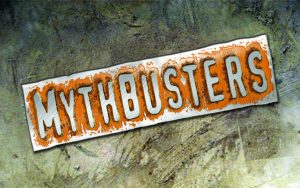 We’re talking about ye olde investor adage to sell out of your positions on the 1st of May and buy back on the 1st of November. The idea is to avoid losses during the supposed summer lull. That’s the intention. But remember Yogi Berra used to say: “The road to hell is paved with good intentions. Was he right?
We’re talking about ye olde investor adage to sell out of your positions on the 1st of May and buy back on the 1st of November. The idea is to avoid losses during the supposed summer lull. That’s the intention. But remember Yogi Berra used to say: “The road to hell is paved with good intentions. Was he right?
The Myth
Sell in May and Go Away – because the market suffers in the summer. Avoid potential losses by going to all cash and buy back when the market is ready to surge ahead in November.
Our Observations: BUSTED!
We looked at the history of the oldest index ETF, SPY, which tracks the S&P 500. It launched in January 1993. From the start of 1994 to the following 21 years, to 2015, the total return of a buy and hold strategy was 555% (8.2% annually).
Sell-in-May : selling on May 1st and buying on November 1st over the same period yielded only a 373% total return (6.26% annually). Your $1m would have grown to only $4.7m compared to a potential $6.5m. In other words, Sell-in-May cost you $1.8m. What gives?

Notice that Sell-in-May worked only six times over the past 20+ years — the six years with negative returns for the summer period. In the other 17 years, Sell-in-May reduced investor returns. The opportunity cost ended up being very expensive
It Gets Worse
How do you make a really bad strategy even worse? Turn theory into practice and add in the hidden costs of getting in and out. If you are selling every May and buying every November, all of your capital gains are short-term, raising your capital gains tax rate from ~20% to ~35%. Add in trading friction costs like bid/ask spreads and the actual cost of the trades and it just gets worse and worse.
The Danger
Simple rules of thumb like Sell-in-May sound clever, convincing and intelligent because they’re easy to understand and digest – much like the Trump-isms you hear on CNN. They can be dangerous when they make you think you’ve discovered a hidden gem, a new private road to riches.
Investing is never this simple. What looks like an easy shortcut probably leads to a ditch. Our suggestion: get the easy things right. Keep taxes low, keep costs even lower and buy early and often. Time is on your side. Ask your advisor to prove or disprove your favorite myths. We’re happy to do another if you have a suggestion. Just ask.
Max Osbon – mosbon@osboncapital.com
Weekly Articles by Osbon Capital Management:
"*" indicates required fields
